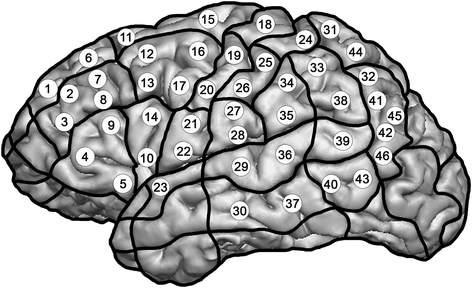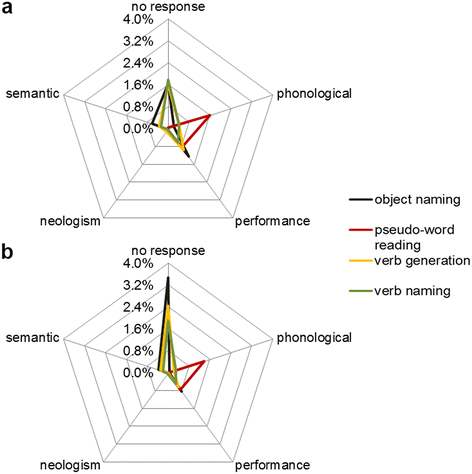Stimulation frequency determines the distribution of language positive cortical regions during navigated transcranial magnetic brain stimulation
- PMID: 25880838
- PMCID: PMC4339007
- DOI: 10.1186/s12868-015-0143-9
Stimulation frequency determines the distribution of language positive cortical regions during navigated transcranial magnetic brain stimulation
Abstract
Background: Although language mapping by repetitive navigated transcranial magnetic stimulation (rTMS) gains importance in neuropsychological research and clinical utility, neuroscientists still use different mapping protocols including different stimulation frequencies. To refine the existing language protocol, we tested two different repetition rates of 5 Hz/10 pulses and 7 Hz/10 pulses with a 0 ms delay in 19 healthy subjects. We furthermore investigated differences between both frequencies in case of performance of four different language tasks: object naming, pseudoword reading, verb generation, and action naming.
Results: Even the small variance in frequencies revealed statistically significant differences concerning the number and type of language errors. Stimulation with 5 Hz evoked a higher number of all occurred language errors in all language tasks (error rate object naming 14% (5 Hz) vs. 12% (7 Hz); pseudoword reading 4% (5 Hz) vs. 3% (7 Hz); verb generation 13% (5 Hz) vs. 11% (7 Hz); action naming 11% (5 Hz) vs. 9% (7 Hz)), whereas 7 Hz evoked specifically more total speech arrests.
Conclusion: These findings suggest that the stimulation frequency has to be adapted to the aim of the rTMS language investigation.
Figures




References
Publication types
MeSH terms
LinkOut - more resources
Full Text Sources
Other Literature Sources

